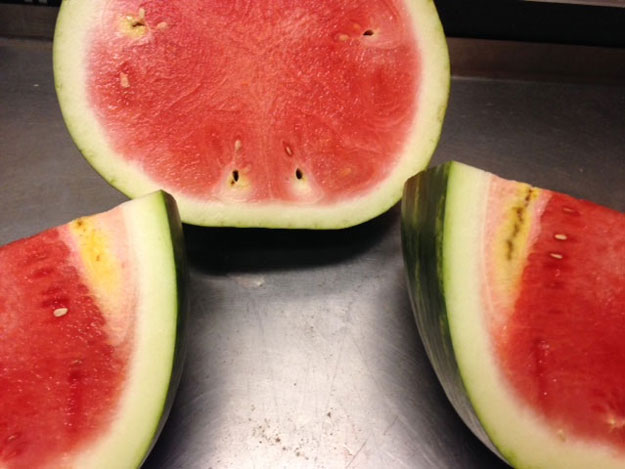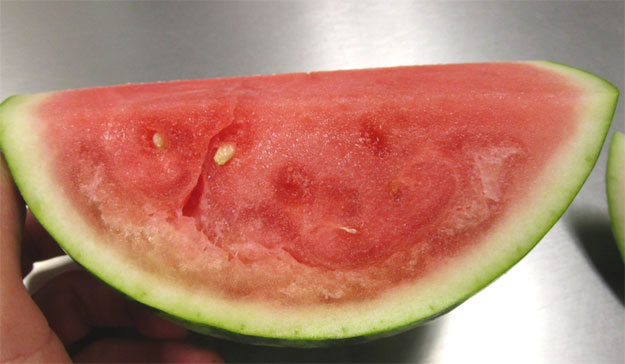Recently I have received some pictures from different chain stores that have found this defect on watermelons. There is no external indication of problems and the QC Inspectors were curious as to what the defect was and what caused it.
I have not seen this defect before and I reached out to some of my watermelon contacts for their insight. Unfortunately no one was able to help me identify this defect. It slightly resembles internal rind spot (caused by extreme droughts while growing), but internal rind spot affects the rind and may also affect the flesh in extreme cases. As you can see, the flesh is affected, but the rind appears to be fine.
As an inspector, when a defect is found and there is doubt as to what it is, the general rule is to simply describe the defect. Call this defect “internal discoloration affecting the flesh, near the rind of the melon.” Of course always follow up with pictures to show the degree of discoloration found. Treat this defect as a condition defect, as you have to assume it will progress and become worse, darker in color and extend deeper into the flesh.
There is no scoring guideline to follow, so use the standard definition of damage, when the discoloration materially detracts from the appearance, and serious damage, when the discoloration seriously detracts from the appearance of the melon. From what is seen here, score all these melons as serious damage, against the 5% tolerance.



2 Comments on “Watermelons- Internal Discoloration”
The internal and the external discoloration on the water melon
can be affected by the sun or chemical product.
I have also found a slightly brown discolored flesh in the middle, between the inner rind and the red flesh and this is caused during pollination. The melons are still eatable and no breakdown was observed, however it is not something the consumer would like to see when the melon is cut. The defect above can be caused from pollination and growing conditions as well as the soil lacking or having excessive nutrients. This condition also resembles internal veining of the flesh and becomes hard and uneatable sometimes.